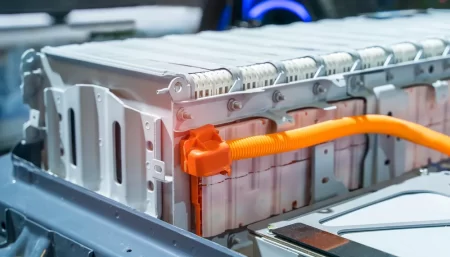Battery Heat Management
Contact us today for the perfect temperature control solution
Battery heat management is an important topic in modern technology, especially in fields such as electric vehicles and renewable energy. With the advancement of technology, research on battery thermal management continues to advance to meet the requirements of new generation battery systems for high energy density and high power density. to
Battery thermal management refers to the effective control and management of heat generated in the battery system to ensure the normal operation and safety of the battery. The battery system will generate a large amount of heat during operation. If the heat cannot be dissipated in a timely and effective manner, the temperature of the battery will rise, thus affecting the performance and life of the battery. Therefore, battery thermal management is an important link in battery system design.
Currently, the main methods used in battery thermal management include passive cooling and active temperature control. Passive heat dissipation is mainly achieved by designing heat dissipation structures, including heat sinks, heat dissipation channels, etc. This method is simple and easy to implement, but its effect is limited and it is often difficult to meet the requirements of high-power applications. Therefore, active temperature control has become a research hotspot in battery thermal management.
Active temperature control achieves heat dissipation and heat management by controlling the operating temperature of the battery system. Common methods include air cooling, liquid cooling and phase change materials. Air cooling uses fans or airflow to enhance the heat dissipation effect, but it has a certain impact on system energy consumption. Liquid cooling uses fluid circulation to absorb battery heat, which can achieve more efficient heat dissipation, but requires additional cooling system construction. Phase change materials absorb and release heat through the phase change process of the material. They have high heat capacity and heat absorption and release capabilities, but they require appropriate phase change materials and structural design.

The Importance of Battery Thermal Management
Thermal-related issues of batteries are key factors that determine their performance, safety, lifespan and cost of use.
1) Battery energy and power performance: When the temperature is low, the available capacity of the battery will rapidly decay. Charging the battery at too low a temperature (such as below 0°C) may cause instantaneous voltage overcharge. causing an internal short circuit.
2) Battery safety: Defects in the manufacturing process or improper operation during use may cause local overheating of the battery, which may in turn cause a chain exothermic reaction, eventually leading to serious thermal runaway events such as smoke, fire or even explosion.
3) Battery life: The suitable temperature of the battery is about 10~30°C. Too high or too low temperature will cause the battery life to decay quickly. The enlargement of power batteries has resulted in a relatively smaller ratio of surface area to volume, making it difficult for internal heat to dissipate. Problems such as uneven internal temperature and excessive local temperature rise are more likely to occur, further accelerating battery decay and shortening battery life.
We provide complete temperature control systems design and manufacturing. From standard models to complete customized products up to 900 tons. We specialize in customer service and are dedicated to helping each customer have the optimal temperature control system for their specific need.
We provide non-standard customized solutions. Both single cooling chillers and cooling & heating combo units are available.
Email: lilia@lneya.com WeChat ID: +8615251628237 WhatsApp: +86 17851209193

 LNEYA
LNEYA
 简体中文
简体中文


















































































